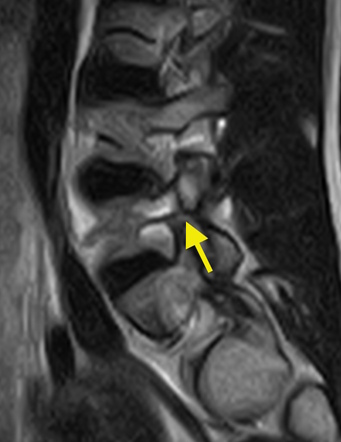
The settlement demonstrates that both sides were aware of the risks that occur in litigation and where medico-legal experts differ in opinion, there is always the chance that the Judge may not favour your expert’s opinion at Trial.
Pars defect with spondylolisthesis full#
Whilst the Defendant refused to pay the full valuation of the claim, agreement was reached at £200,000.00, which Mrs Somerville confirmed that she was prepared to accept. They considered the claim should be limited to 5½ years of pain and suffering with no ongoing losses.Ĭourt proceedings were issued but the Defendant was keen to reach an amicable settlement and therefore, alongside the Court proceedings, efforts were made to agree a suitable settlement between the parties. that despite the delay in diagnosis and treatment, there was no difference to Mrs Somerville’s long-term outcome. The Defendant did not agree with the opinion of the medical experts instructed by Williamsons and therefore obtained their own medical evidence, which they said supported their position, i.e. The Defendant, admitted negligent treatment but denied the extent of injuries sustained as a result of their delay in providing the correct treatment.
Pars defect with spondylolisthesis plus#
Williamsons therefore assessed the value of the claim on the basis of ongoing pain and suffering, plus financial losses including past and future losses for ongoing care Mrs Somerville required and also alterations required to her home, to help her with daily living. The medico-legal experts confirmed that Mrs Somerville was left with ongoing issues with pain management and would never reach the level of recovery from her spondylolisthesis that she would have done had she had surgery in 2011, rather than in 2016. After, detailed investigation of the case, including obtaining medical reports from various medico-legal experts, a claim was brought for not only 5½ years of additional pain and suffering, but also for the long-lasting consequences that arose as a result of the delay in providing treatment. Mrs Somerville instructed Williamsons to bring a Clinical Negligence Claim. Mrs Somerville was finally reviewed by a spinal surgeon and recommended to undergo spinal fusion surgery which she underwent in October 2016, some 5½ years after she would have had the surgery, but for the mistake made by the hospital in 2009. This injection failed to relieve her back pain and she was therefore referred for a surgical opinion. Mrs Somerville was listed for a nerve root block injection which was performed in March 2015. In September 2014, following an MRI scan, the very condition evident from the x-ray back in 2009 was discovered which was spondylolisthesis or pars defect. In January 2014, it was noted by the pain service that Mrs Somerville’s symptoms had deteriorated considerably and that she had never actually had full investigations carried out by a back consultant. Her symptoms severely impacted her everyday life. The pain was so severe Mrs Somerville had to take strong opioid painkillers and had to give up her cleaning job.

She received various treatments including referral to the pain team who undertook injection therapy, which provided no long-term relief.

Regrettably, the defect was not picked up by the Defendant, Hull & East Yorkshire Hospitals NHS Trust and over the next 5 years Mrs Somerville continued to suffer with deteriorating back pain. a forward slip of one of the lumbar vertebra. In fact, the x-ray showed degenerative disc disease in the lower back with a Grade 1 spondylolisthesis (also known as pars defect), i.e. An x-ray was done in November 2009, which, unfortunately, was wrongly reported as showing no problems. In July 2009, Mrs Somerville attended her GP suffering with back pain, which she had noticed for a few months.


 0 kommentar(er)
0 kommentar(er)
